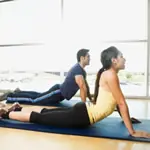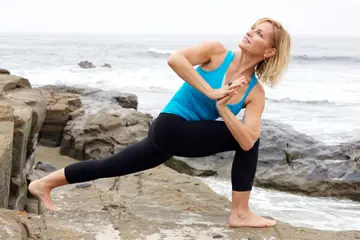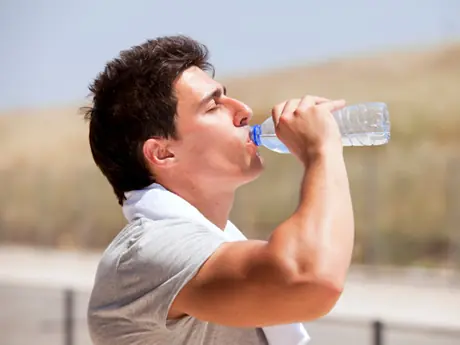
Why not enhance your performance and prevent injury by adding yoga to your training plan now? A well-rounded yoga practice includes dynamic flexibility training, core stabilization, strengthening and balance work. By focusing on these vital elements, yoga can help you recover faster after workouts, open up the tight areas that hinder performance, improve range of motion, and develop mental focus and concentration.
"I've definitely noticed benefits in my triathlon training from yoga," said Heidi Resiert, a triathlete from San Diego. "My recovery time is much quicker, my shoulders feel stronger in the pool, and my muscles don't feel as tight after long runs or bike rides. I'm glad I found yoga and added it to my weekly workout routine. Not only do I feel stronger, but I also feel more confident that I will continue to be injury free."
Prevent Injury
Many sports, such as cycling and running, have very repetitive movements usually in one direction and in one plane of motion. These sports can develop certain muscle groups while ignoring others. Over time, this process causes imbalances in the muscles and joints leading to overuse injuries. For instance, tight hamstrings and hip flexors will cause the body to recruit from other joints, joints not intended for bearing extra loads.
Common overuse injuries among athletes include those involving the illiotibial band (ITB), knee, hamstrings, hip flexors and shoulders. Often, these injuries are directly linked to lack of flexibility, poor core strength and misalignment. Yoga helps alleviate this tightness, builds a stronger center, and aligns the spine. In order to minimize and/or prevent injury, athletes should concentrate their efforts on these areas used most in endurance sports.
Even if athletes stretch pre- or post-workout, they are usually just stretching the muscles in the same direction and plane of motion in which they will be exercising. Yoga goes beyond simple stretching by working the muscles and joints through all ranges of motion--activating the little-used muscles that support the primary movers. The body must be worked through all three planes of motion in order to remain balanced and healthy. Yoga works not just in the sagittal plane but, in the frontal and transverse planes as well, ensuring well-rounded development.
Many yoga poses, such as Revolved Crescent, feature twisting motions in the transverse plane, essential to opening up tight obliques and lower backs. Balancing postures like Tree or Eagle are some of the most effective ways to correct muscle imbalances and poor body mechanics.
- 1
- of
- 2
Get ACTIVE on the Go


Couch to 5K®
The best way to get new runners off the couch and across the finish line of their first 5K.
Available for iOS | Android








Discuss This Article